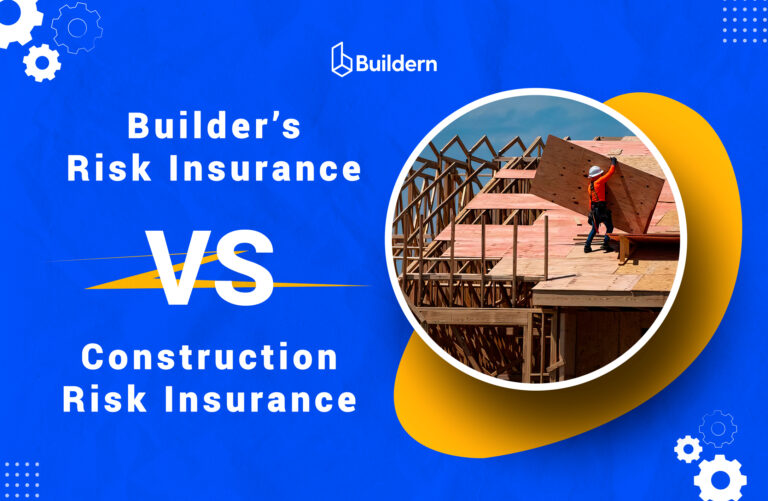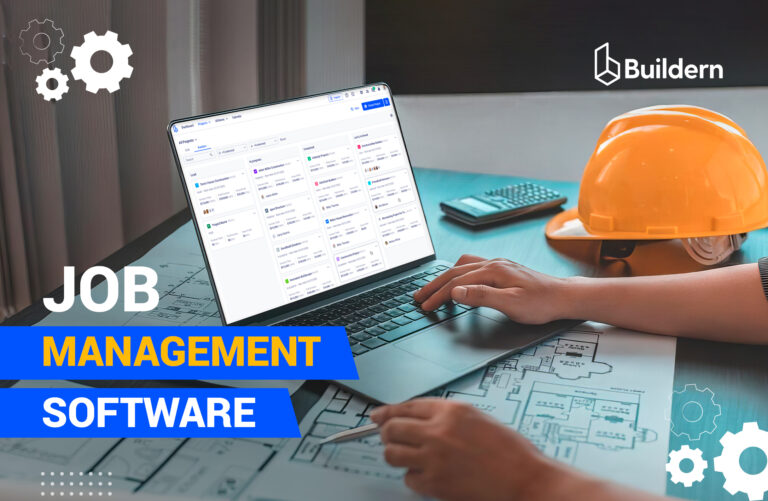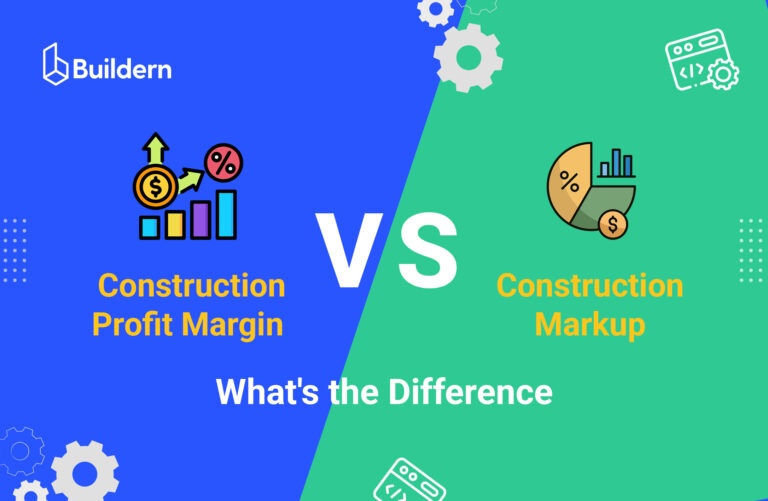Construction Business KPIs: What to Measure and How to Do It Right

How can a general contractor say everything is done right unless efforts are measured?
I’ve always believed that you can’t improve what you don’t measure. It’s the same when it comes to construction project management. Of course, business owners focus on the financial aspects of their operations.
Hitting the revenue goals is great, but it’s not the only thing that matters. If your projects are constantly delayed, your crew is burning out, and clients are unhappy with the final results, this is far from reaching construction KPIs.
In my blog, I’ll discuss the broader picture of KPIs, beyond just financial metrics, and how they can affect your business success.
Table of Contents
- What KPIs Really Mean for Your Construction Business
- Constriction Project KPIs
- Tools for Tracking Construction KPIs
- Measure What Matters

What KPIs Really Mean for Your Construction Business
KPIs, or key performance indicators, are the way you are doing business. In construction, this could be a profit margin, project deadlines, or site safety rate.
You can either measure financial KPIs or general success. In other words, KPIs are like a checklist to keep up with while developing the construction business. For example, you can choose the indicators that organizations as the National Association of Homebuilders, offer to track.
Most contractors I know look first at the money side. Profit margins, cash flow, and revenue goals, all matters, especially if you are a big construction company running many projects.
But the point is not only that rough money indicators can be indicators of progress. For instance, you finish a project under budget, but it’s three months late, and it’s your fault because of poor project management. Or maybe your crew is working overtime every week, and half of them are ready to quit.
These are the problems that may heavily affect the construction business, especially for a general contractor working with a small team.
Financial KPIs
If you want to see whether your company stays within budget and makes enough profit, you should first of all track these indicators:
- Profit Margin: The percentage of revenue left after covering all costs. A healthy profit margin shows your business is running without losses.
- Cash Flow: Tracks amounts coming in and going out. Positive cash flow means you can cover expenses and keep projects moving without stress.
- Accounts Receivable: The amount of money clients still owe you. Too high, and it signals payment delays that might cause cash problems.
- Revenue Growth Rate: This measures how quickly your construction business income is increasing over time.
- Return on Investment: It shows how much profit or benefit you get from the money you invest. It helps if a project, tool, or purchase is worth it.
Now I will list some indicators that have a great impact on the project, but are not only about numbers.
Constriction Project KPIs
When you start a construction business, you see that there is no project that looks the same. Especially with custom homes, budgets, designs, and timelines can all vary widely. There’s no one-size “template” to measure success.
To keep it somehow under control, it’s important to track other indicators that show how your projects are really performing. In my opinion, some KPIs help you see the full picture of a complex, interrelated process where every variable matters.
Let me list some of them and explain why they matter.
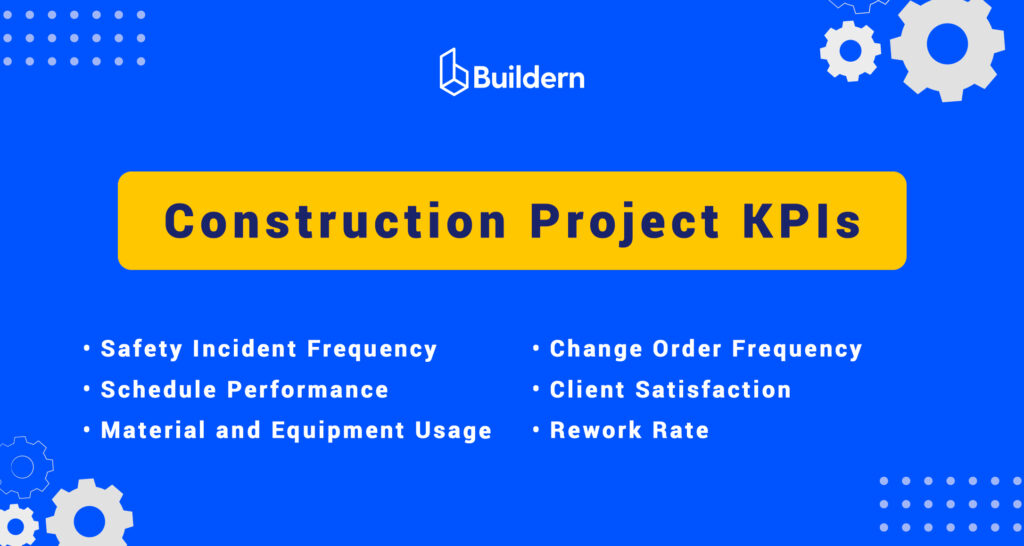
Safety Incident Frequency
In my experience, nothing is more harmful to a project than a safety issue. A seemingly small accident can shut down a site for hours, costing both time and money. Safety incident frequency measures how often accidents and injuries, or miner safety-related issues, happen on your job sites.
For example, imagine your team is framing a house and someone trips over poorly stored materials. Even if no one is seriously hurt, that incident counts. This is a clear signal that there is a need for improvement.
When these numbers are tracked regularly, you can spot patterns. Understand how site safety is ensured. For example, you may discover that the incident spike occurs when you have new hires or when crews are rushing to meet deadlines. Probably it’s time to update safety protocols or check the staff.
Schedule Performance
A general contractor may have two profitable projects, but has problems with staying within budget. Imagine no one can recommend you as a reliable builder. People building a house do not want to see a project that lasts forever.
This happened to me when everything looked fine on paper, but constant delays turned a profitable project into a stressful headache. If you do not want to see penalties and upset clients, track the schedule performance during and after the project.
It’s easier to do when you have a tool for setting schedules from the very start. When the scheduling is done with a Gantt chart, tracking is a process within the project, not after it is completed. It’s a visual tool showing all tasks and timelines, and if they overlap.
With all the data prepared, I can easily measure the performance to see how many projects are completed on or ahead of schedule.
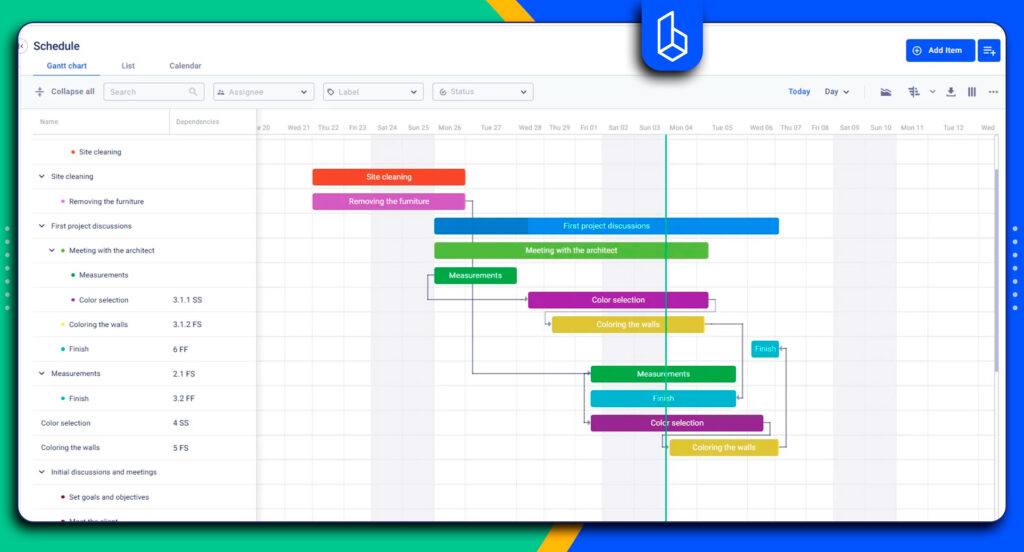
Material and Equipment Usage Efficiency
When it comes to materials and equipment, it’s essential to track how they are used, so as not to face extra costs.
I’ve seen excavators and loaders sit idle on job sites, costing money just by being there. For builders, this is a huge indicator. Every hour a machine isn’t working while you’re paying for it affects project margins.
The same applies to materials. If you notice that some materials are not used efficiently, it means it’s time to change material management tactics.
Tracking how materials are used helps you spot where the leaks are. Maybe you’re consistently over-ordering, or crews need better instructions to avoid errors. Anyway, it’s one of the indicators of the construction KPIs that you have to set within your company.
Change Order Frequency
Something that starts from a “simple design” update can turn into weeks of revisions. For example, clients kept changing finishes, or the architect added “just one more detail.” Change order frequency measures how often these adjustments happen during a project.
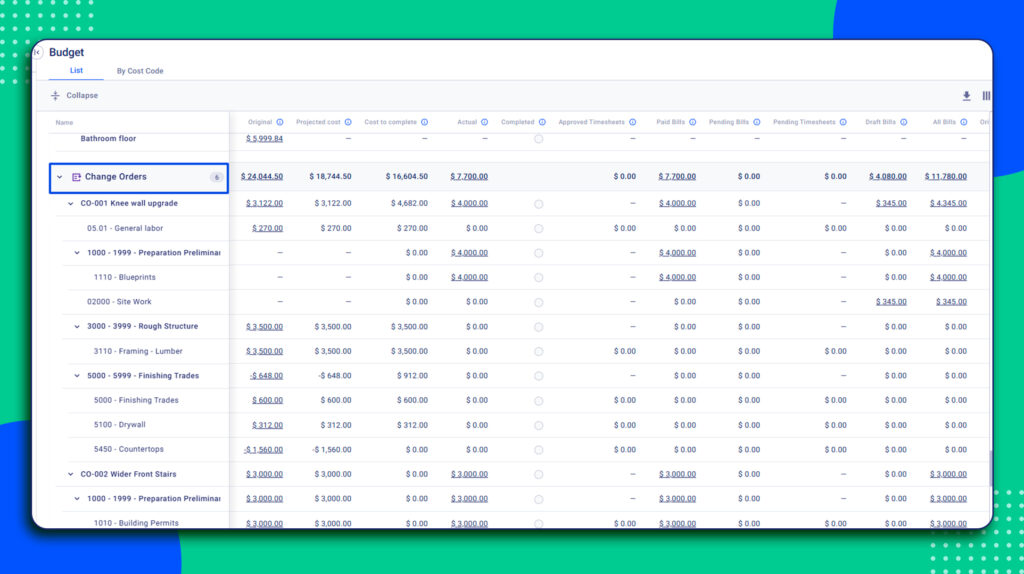
Every change order means extra time and cost. Tracking how many change orders you deal with on average gives you insight into planning quality and client communication.
When you see a pattern of frequent changes, it’s a signal to better manage your preconstruction process and set clearer expectations with clients from the very start.
Rework Rate
Change orders are often out of the builder’s hands, as they come from clients, designers, or architects. What about rework? That’s usually on subcontractors or general contractors due to their inability to manage the construction process properly.
A wall framed an inch off or wrongly installed plumbing adds up to construction rework. In general, tracking rework rate as a construction KPI shows how much time and money you’re spending redoing work that should’ve been right the first time.
Client Satisfaction
A builder can hit every budget target and finish a project on time, but if the client isn’t happy, it doesn’t feel like a win. Client satisfaction is one of the most important KPIs for general contractors because it directly affects their future projects. The referrals, I believe, are one of the working marketing tools so far, and if the client is unhappy, your reputation is at stake. Client communication plays a great role here, as when clients get all information on time, for example, through a client portal, they are excited to recommend you.
The question is how to measure satisfaction? It’s up to you, as there are different tools, such as surveys, feedback forms, or the most effective one, to track how many clients come back for another project.
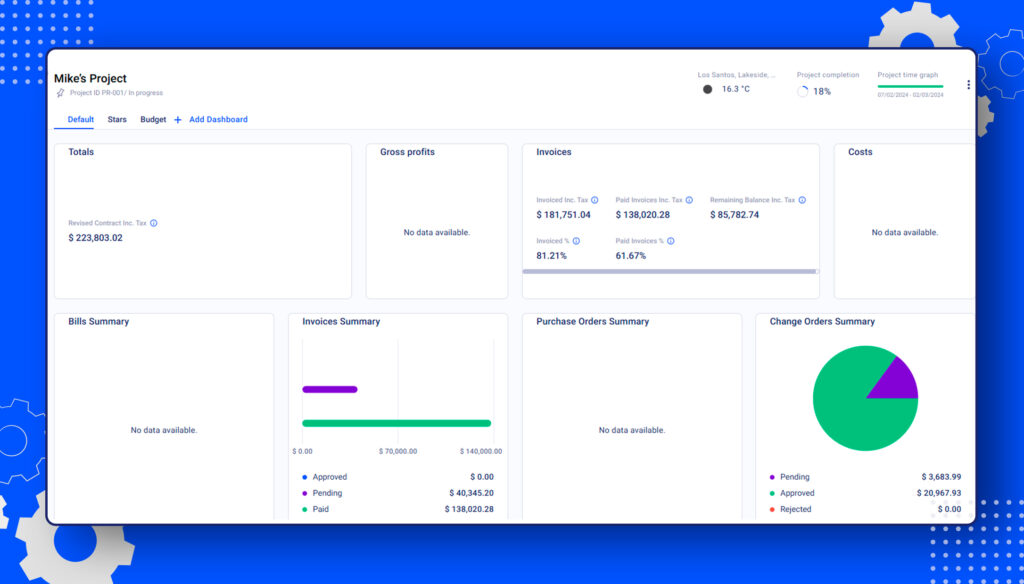
Tools for Tracking Construction KPIs
Understanding what to track is only half of the job; how to do it consistently and what tools to choose is not as easy as it sounds.
The methods you use to track KPIs matter just as much as the KPIs themselves. Some contractors rely on manual practices, while I prefer using construction management software to have more automation to simplify tracking of several projects.

Manual Tracking
Before dashboards and apps came along, most contractors tracked KPIs “the old-fashioned way”.
Manual tracking can still work, especially for smaller businesses or single-project operations. You can log hours worked, material usage, or project milestones in spreadsheets or even on paper forms. However, reviewing and copy-pasting or manually entering data takes much time.
Some contractors may find it convenient, as they do not have to train anyone on the team. But let’s be honest, manual tracking has its limits. It’s time-consuming, there can be a lot of human errors, and, most importantly, you may notice them when it’s too late.
By the time you notice a problem in the numbers, the project may already be in a difficult situation. So while manual methods are fine as a starting point, most contractors eventually realize they need something faster. Now let’s move to the digital solutions.
Construction Management Software as a Tracking Tool
One can stick to its traditional way of doing things, but once a faster and easier mechanism is found, there is no way back.
One of the biggest advantages is real-time visibility. You do not have to wait until the end of the month to start calculating the percentage. I just log in to see how often I have scheduled updates, how my material management works, and how many change orders I process during a week.
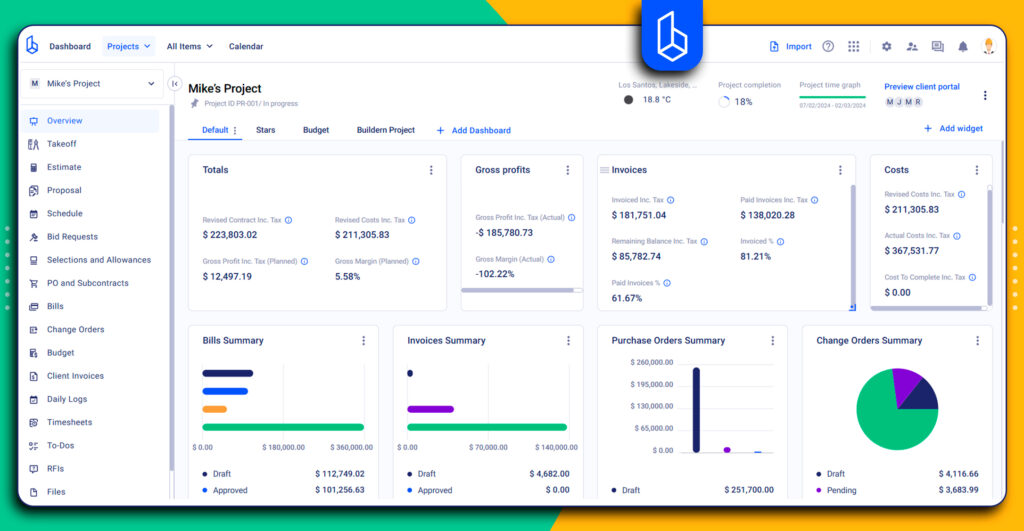
Our construction management software also provides automated reporting. It saves time and reduces errors, while also making it easier to share updates with stakeholders. I would recommend the ones that have different portals for both clients and subcontractors or vendors.
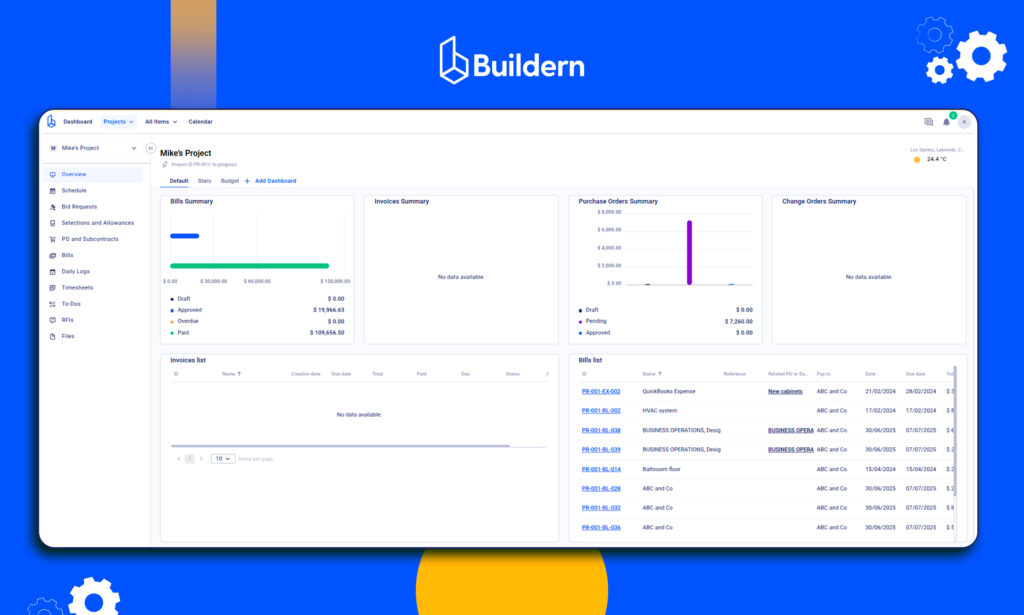
Another benefit is integration. Many tools connect with accounting systems to make financial KPI tracking easier as well.
That way, financial, operational, and project KPIs all flow into one place. It’s far more convenient than chasing separate reports.
What Are the Most Important KPIs in Construction?
If you ask me, there’s no single checklist of KPIs that works for every contractor. A custom home builder, for example, won’t track projects the same way as a commercial contractor. Still, some KPIs are common for all.
Financial KPIs like profit margin, cash flow, and ROI will always matter to see if the business is sustainable and is making money. However, such KPIs as schedule performance, safety incident frequency, and rework rate are also important.
How Often Should I Track KPIs?
Some financial KPIs need your attention daily or weekly, while others can be reviewed once a month or even quarterly. Everything depends on the scope and number of projects. Nothing throws a project off faster than running out of money. So, yes, cash flow and other financial KPIs have to be monitored more often. On the other hand, long-term KPIs like revenue growth rate or ROI make more sense to track monthly or quarterly.
How Do KPIs Help with Client Relationships?
From what I’ve seen, the success of a small business often comes down to relationships. This is both about the relationship with the reliable vendors and subcontractors as well as clients. KPIs can play a bigger role here than many realize.
Take schedule performance as an example. If you can show that most of your projects finish on time, clients trust you more. I always remember client satisfaction itself as a KPI. Tracking feedback and referrals shows you how well you’re performing.
Measure What Matters
If a company is not performing as planned, do not rush to launch a marketing campaign. Start with understanding what really makes you lose or gain clients. Financial KPIs always matter, but they don’t tell you if your projects are safe, on time, or leaving clients happy.
I believe the most successful contractors are the ones who can adequately assess their performance. Even if there are some gaps, learn how to improve KPIs. Start tracking it with construction management software, and most importantly, monitor the indicators that reflect your business goals.

